B2B technology providers undertake rebranding projects for various reasons. And over the course of the hundreds of rebrands Bluetext has executed, we’ve heard them all: M&A activity, market and competitive shifts, organizations outgrowing their current brand, a desire for updated visuals, you name it.
Often, these rebrands include refreshed creative elements – a new logo, name, and website – to help amplify the business’s marketing efforts, drive market growth, and enhance brand positioning. When prioritizing the visual components of a rebrand, the PR and communications portion can be overlooked.
However, maximizing the near- and long-term benefits of a rebrand requires that PR and communications strategy be incorporated from day one. When supporting clients through a B2B rebrand, Bluetext ensures that PR and communications are involved from the start of the process. Because there is a story to be told to all your stakeholder audiences —a story that extends beyond a new logo, CVI, and website.
Tactical components of a robust PR and communications rollout require a steady cadence of activity, including:
- An anchor press release and announcement strategy to create momentum
- Social media strategy and execution
- Thought leadership (SME bylines + executive visibility)
- Event speaking and award program execution
- Customer testimonials
These elements comprise the three pillars of any successful PR and communications B2B rebrand strategy: amplification, acceleration, and assurance.
Amplification
Rebrands offer businesses unique opportunities to highlight their evolution. They serve as a springboard to amplify companies’ core strengths in new, compelling ways to current and prospective clients.
When ideating on how to make a splash and drive attention to the rebrand, companies should highlight how their solutions are pushing the industry forward and solving tangible client problems.
This pillar should include three tactics:
- Social media posts that tease the enhanced capabilities of the rebranded business in the lead-up to the announcement, driving interest and intrigue. Following the launch, social channels should be used to help sustain momentum.
- An anchor press release that announces the new brand’s creation, how the new company addresses critical challenges in the market, and why the new entity will be better positioned to service clients and provide innovative solutions for new customers.
- Newsjacking, i.e., rapid-response media relations, provides opportunities for company spokespeople to speak with journalists on key industry topics and articulate how the company is addressing and thinking about these market trends.
Acceleration
Amplifying the rebrand announcement is critical to increasing awareness of the new company and its offerings. Once you have the audience’s attention, the next step is communicating how this rebrand will accelerate growth and drive value for the company and its clients.
Rebrands should reframe the company’s position in the market while demonstrating its momentum and ambition. In other words, what is the business looking to achieve? How does it plan to grow? By highlighting early milestones and client successes, the company can map out its desired trajectory for the months and years ahead.
Answering these questions can be accomplished through:
- A Subject Matter Expert (SME) Thought Leadership program to highlight the organization’s areas of expertise and detail how the new brand is pushing the industry forward and addressing market challenges in ways not previously possible while clarifying the mission of the new brand.
- Speaking at conferences and pursuing industry awards. These are useful avenues to reinforce the company’s new market position, validate the business’ latest offerings and also serve as respected forms of recognition within the industry.
- Highlighting customer successes that reflect the values of the new brand while offering tangible examples of early successes.
Assurance
With any change comes a degree of uncertainty. However, that doesn’t mean that business operations will be altered. The last pillar to any successful PR and communications rollout is assuring all stakeholders – clients, employees, and investors – that day-to-day operations will not change, but instead grow and thrive.
Articulating to these stakeholders how the new company will be a positive disruptor without causing negative disruption is crucial.
For employees, the rebrand should energize workers and reinforce the organization’s values. Empower them to provide details of the rebrand through a social advocacy campaign that includes brand-aligned content, personal stories, and messaging examples that they can use as guidance for their posts.
For investors, it’s essential to demonstrate how the rebrand will strengthen the company’s capabilities to deliver value and adapt to a changing market landscape.
When undergoing a rebrand, organizations that effectively execute these three foundational PR pillars will educate key audiences and generate excitement about the new company. These PR strategies and tactics should fold into a holistic brand evolution approach. To learn more about how Bluetext executes successful PR and communications B2B rebrand rollouts, follow us on LinkedIn or contact us today.
In government contracting, the RFP isn’t the starting line—it’s the midpoint. By the time a request for proposal (RFP) hits SAM.gov or an agency portal, the most successful vendors have already been shaping the conversation. Their messaging is familiar. The solutions feel tailored. Their names are top of mind.
Welcome to pre-RFP marketing—the strategic art of influencing the buy before the bid.
Why Waiting for the RFP Is Too Late
Government buyers aren’t making decisions in a vacuum. Long before an RFP is released, agencies are:
- Conducting market research
- Reviewing past performance
- Following industry thought leaders
- Listening to the players shaping public discourse
If your brand only shows up once the formal procurement starts, you’re already behind. Agencies tend to favor vendors they know, trust, and associate with mission fluency. Pre-RFP marketing ensures that you’re in the conversation before requirements are locked in.

What Pre-RFP Marketing Looks Like
This isn’t traditional lead-gen marketing—it’s highly strategic, often narrowcasted, and deeply aligned with procurement timelines. Pre-RFP marketing may include:
- Agency-specific messaging that speaks to mission goals and challenges
- Content marketing aligned to strategic priorities (e.g., zero trust, AI integration, climate resilience)
- Awareness-building campaigns that elevate your expertise in relevant domains
- Executive thought leadership that frames your brand as a solutions partner, not just a vendor
The goal isn’t volume—it’s influence.
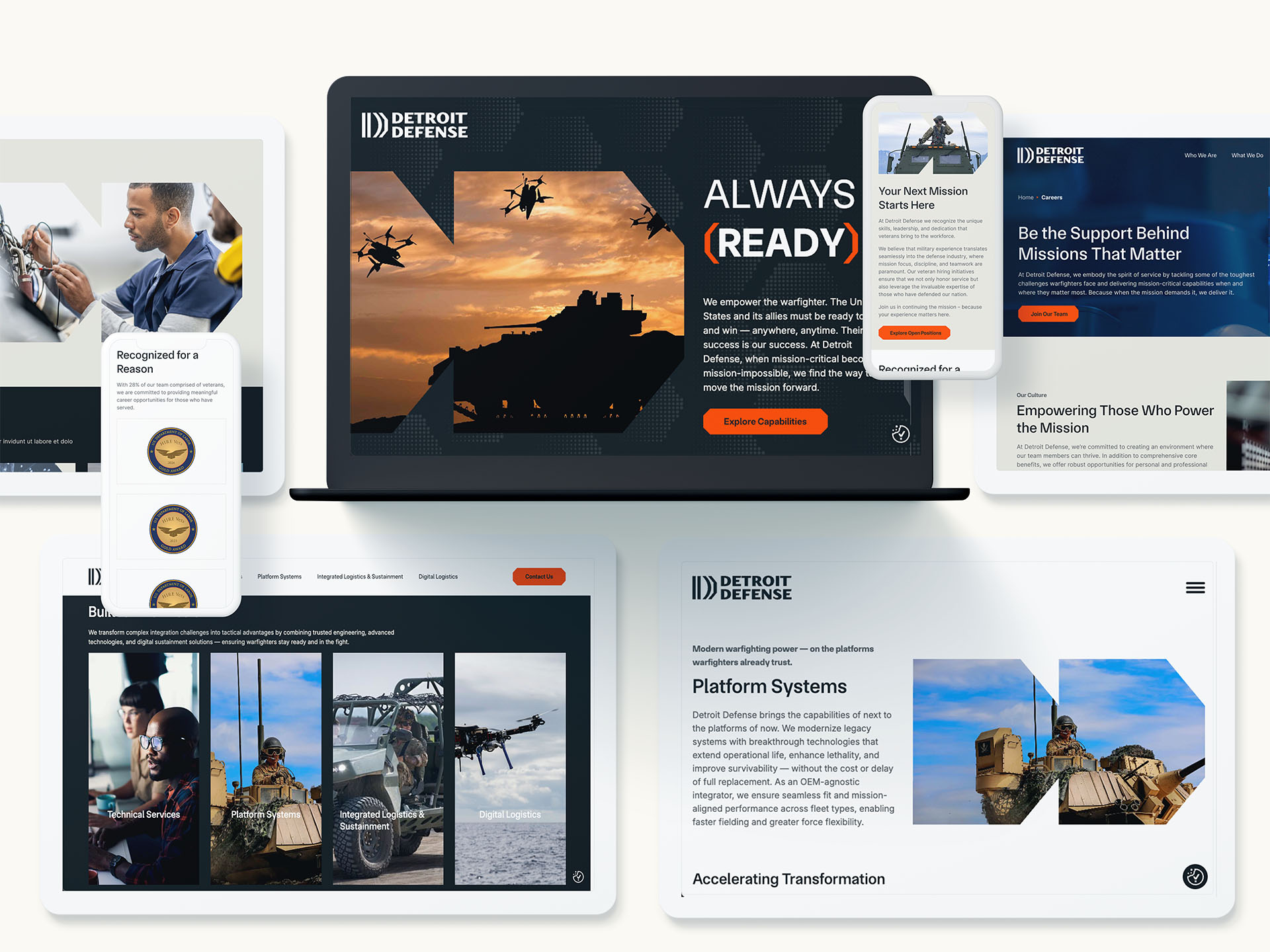
Marketing + Capture: The Dream Team
In the B2G space, marketing should work hand-in-hand with business development and capture teams to create pre-RFP momentum. That collaboration looks like:
- Message alignment based on capture insights, agency intel, and pain points
- Strategic content creation that reinforces key capabilities tied to upcoming procurements
- Campaign timing that builds awareness months—or even years—before the bid drops
- Visual storytelling that mirrors future proposal themes and evaluation priorities
Pre-RFP marketing isn’t a siloed activity. It’s an integral part of shaping opportunity strategy.
Tactical Ways to Influence Before the RFP
Smart pre-RFP marketing combines digital precision with reputational lift. Tactics might include:
- Agency-targeted landing pages or microsites: Showcase case studies, credentials, and capabilities specific to the agency’s needs.
- Mission-aligned white papers, videos, or articles: These signal thought leadership and policy fluency—and can be shared by internal champions.
- LinkedIn targeting and paid campaigns: Reach key agency decision-makers and influencers with tailored content.
- Conference presence and speaking opportunities: Position SMEs and executives at industry events where agency staff are present.
- PR placements in federal media: Establish credibility through earned media on platforms read by procurement leaders.
These assets don’t just inform—they shape perception.
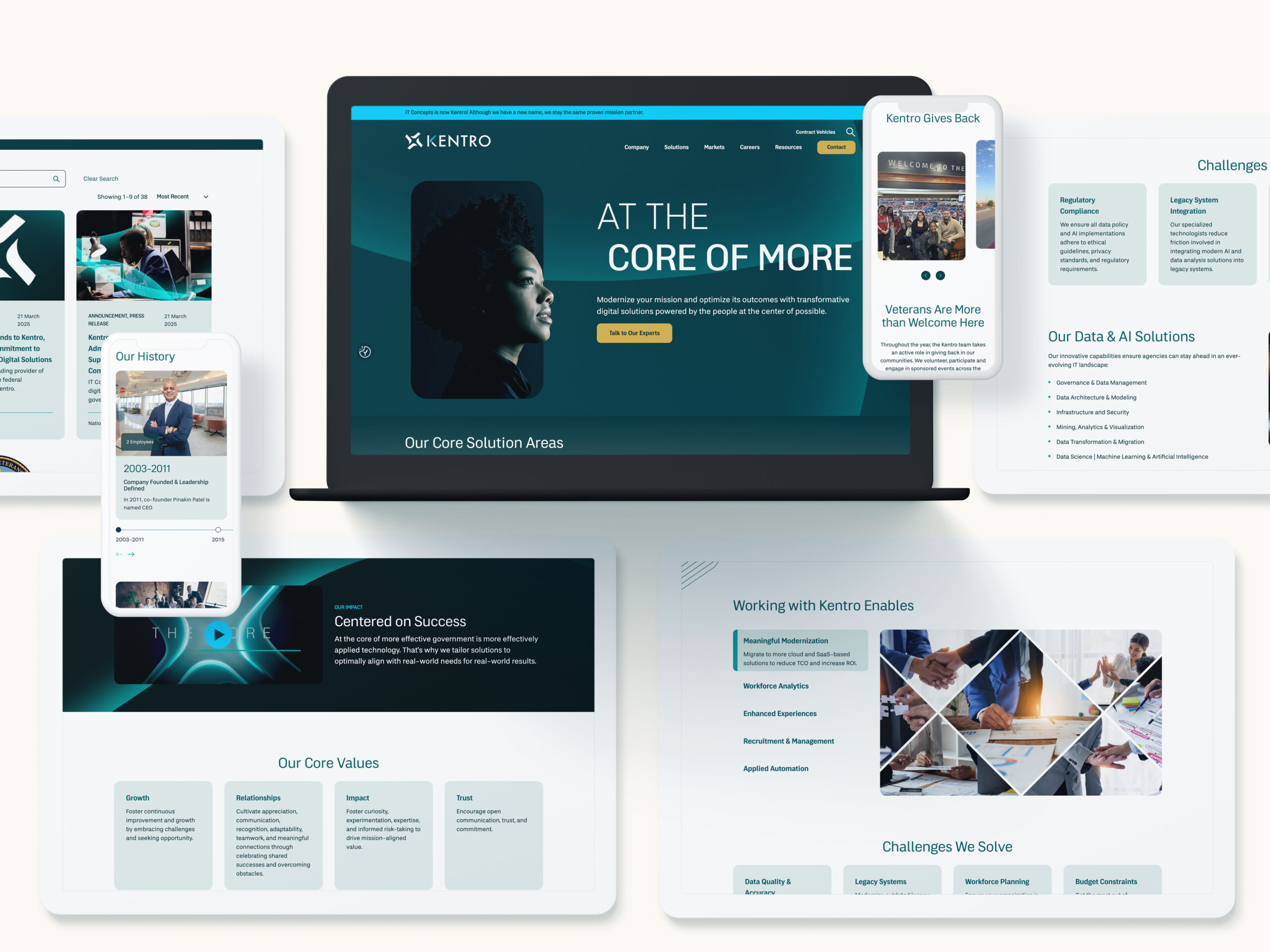
How Pre-RFP Marketing Pays Off
This level of positioning isn’t just about awareness—it influences outcomes. Done right, pre-RFP marketing:
- Establishes name recognition that builds evaluator confidence
- Increases your “trusted partner” status well before proposal submission
- Shapes the RFP itself by aligning with the narratives and needs already in motion
- Sets the stage for better win themes when the proposal does come around
It’s a long game—but it’s a proven one.
Don’t Just Bid. Influence.
Winning in the public sector isn’t about reacting quickly—it’s about planning smartly. The most successful GovCon brands don’t just respond to RFPs. They shape the buying environment before the paperwork even begins.
Want to Lead Before You Bid?
Bluetext helps government contractors develop strategic, pre-RFP marketing campaigns that position them as mission-aligned, agency-ready partners. From messaging architecture to campaign execution, we work alongside your capture and BD teams to create early influence that pays off at award time.
Contact us to get ahead of the next opportunity—and make sure you’re on the shortlist before the RFP even drops.
Why Crisis Management Matters More Than Ever
In today’s hyperconnected world, brands must be prepared to respond to crises in real time. Social media, instant news cycles, and viral content mean that missteps can escalate quickly. Whether it’s a cybersecurity breach, PR scandal, or regulatory issue, how a company handles a crisis can define its reputation for years to come.
At Bluetext, we specialize in helping brands develop and execute crisis communication strategies that safeguard their reputation and maintain public trust. Here’s how your company can prepare for and respond to crises effectively.
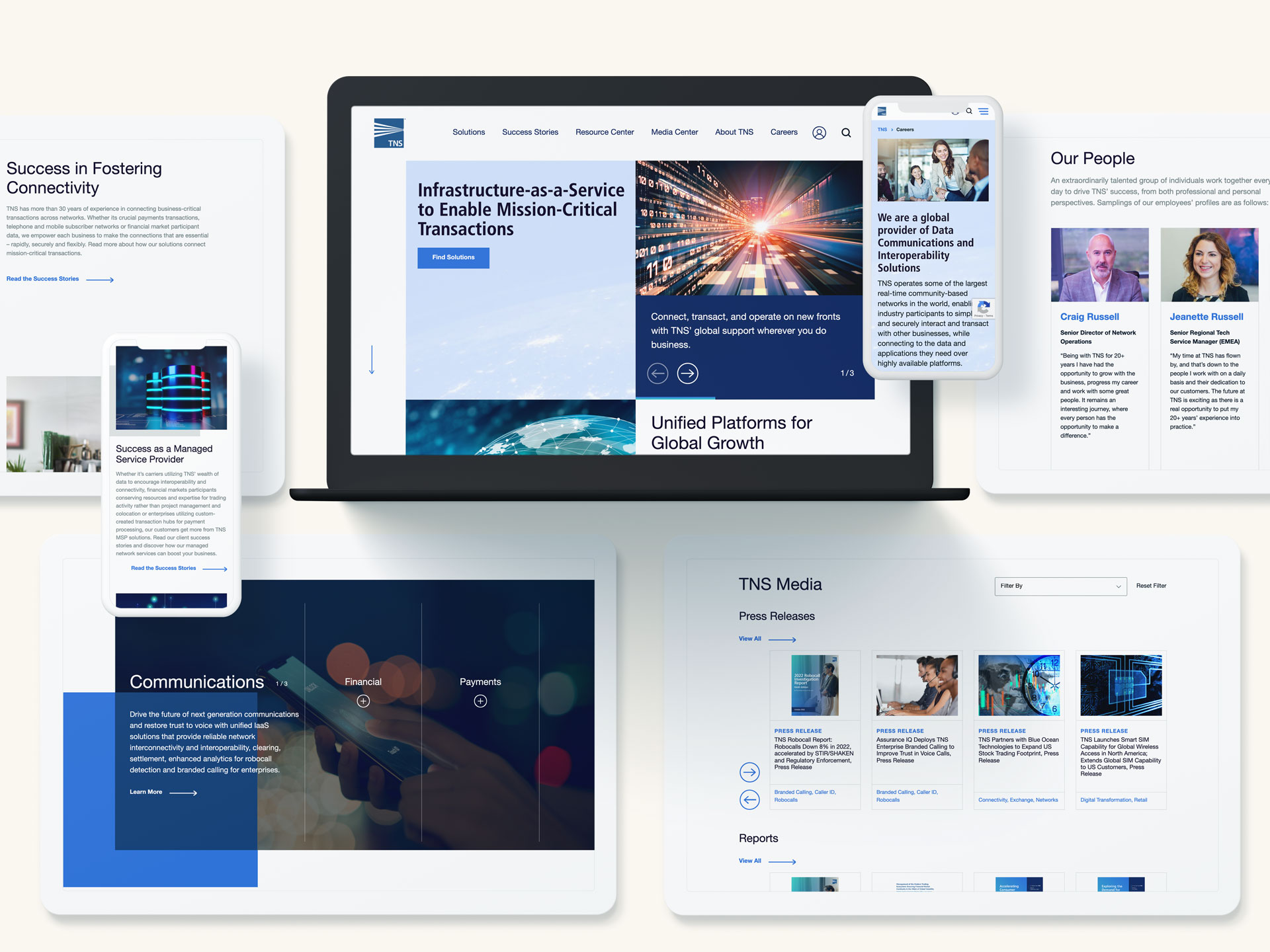
Understanding the Modern Crisis Landscape
Crisis situations can arise from various sources, including:
- Cybersecurity threats: Data breaches and hacks can compromise customer trust.
- Regulatory non-compliance: Failing to adhere to industry standards can lead to public scrutiny.
- Executive missteps: Social media blunders and controversial statements can quickly spiral.
- Product failures or recalls: Negative customer experiences can damage brand credibility.
Recognizing potential risks allows brands to proactively develop response strategies before a crisis unfolds.
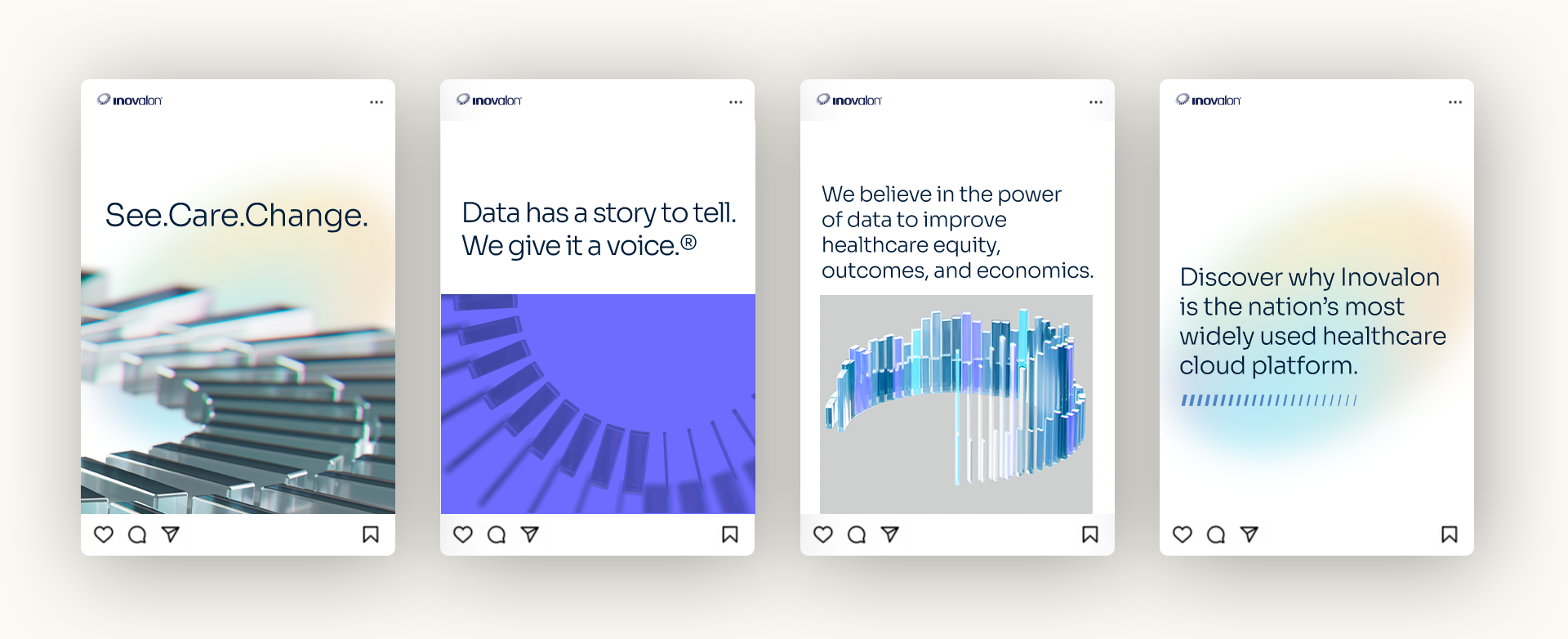
Building a Crisis-Ready Organization
Preparation is the foundation of effective crisis management. Brands should:
- Establish a dedicated crisis response team with clear roles and responsibilities.
- Develop pre-approved messaging frameworks to ensure consistent, on-brand responses.
- Conduct regular crisis simulations to test response protocols and identify improvement areas.
Executing an Effective Crisis Response
During a crisis, swift and strategic action is essential. Key steps include:
- Control the narrative: Issue an initial response promptly to acknowledge the situation.
- Communicate transparently: Provide accurate information and avoid speculation.
- Engage with stakeholders: Address concerns through social media, press releases, and direct communication.
- Monitor and adapt: Use social listening tools to gauge public sentiment and adjust messaging accordingly.
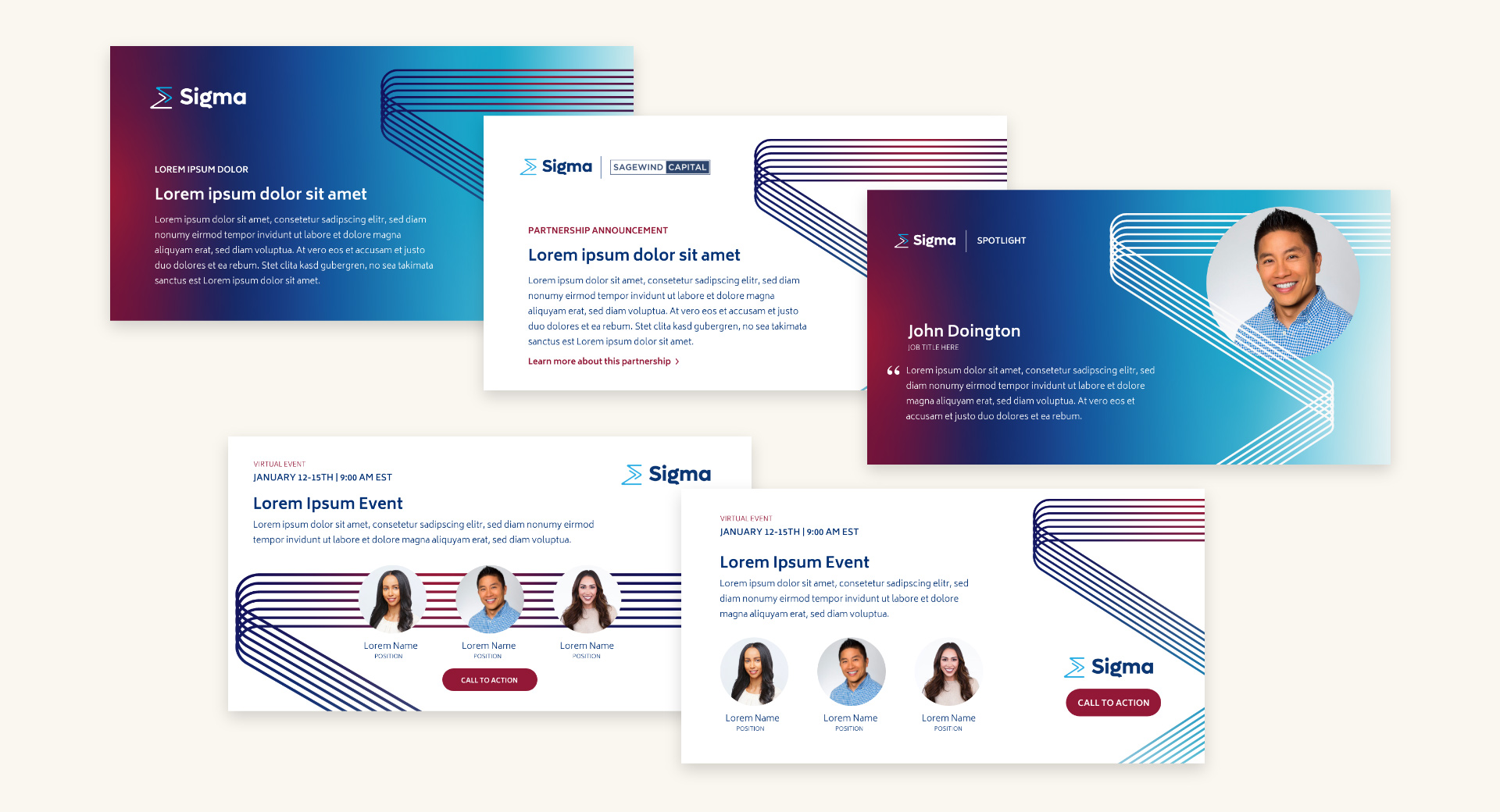
Rebuilding Trust After a Crisis
Once the crisis is under control, brands must focus on reputation recovery by:
- Demonstrating accountability: Clearly outlining corrective actions taken.
- Engaging with key audiences: Reassuring customers, partners, and stakeholders.
- Enhancing long-term brand resilience: Implementing lessons learned to improve future crisis responses.
How Bluetext Can Help
Crisis management requires a proactive approach, strategic execution, and expert guidance. At Bluetext, we help brands develop tailored crisis communication plans to navigate challenges with confidence. Contact us today to ensure your organization is prepared for any crisis scenario.
In today’s hyper-connected world, crises unfold in real time, amplified by social media, 24/7 news cycles, and instant communication. The days when brands had the luxury of carefully crafting a response over hours or days are long gone. Now, organizations must react swiftly, transparently, and strategically to manage crises effectively. This blog explores the transformation of crisis management in the digital age and outlines best practices for brands to navigate challenges while maintaining trust with their audience.
The New Landscape of Crisis Management
Before the digital era, crisis management primarily relied on traditional media channels—press releases, news conferences, and carefully managed public relations strategies. Today, crises can escalate within minutes, driven by viral social media posts, influencer commentary, and rapid news dissemination. Some of the key challenges brands face in this environment include:
- Speed of Information Spread: A single tweet or video can reach millions within minutes, making it crucial for brands to respond quickly.
- Misinformation and Fake News: False narratives can take hold before brands even have a chance to react, complicating crisis containment.
- Increased Consumer Expectations: Audiences demand immediate transparency, accountability, and direct engagement from brands during crises.

Strategies for Crisis Management in the Digital Age
To effectively navigate crises, brands must implement modern strategies that align with the fast-paced nature of digital communication.
1. Real-Time Monitoring and Social Listening
Crisis management begins before a crisis even arises. Leveraging social listening tools and AI-powered analytics can help brands detect potential issues early, allowing for proactive measures.
2. Develop a Crisis Communication Plan
Having a predefined crisis response framework enables brands to react quickly and consistently. A strong crisis plan should include:
- A dedicated response team
- Clear escalation protocols
- Pre-approved messaging templates for different scenarios
3. Respond Quickly, But Thoughtfully
While speed is critical, a hasty, poorly crafted response can do more harm than good. Brands should:
- Acknowledge the issue promptly
- Provide factual, transparent updates
- Avoid defensive or dismissive language
4. Engage with Stakeholders Effectively
Stakeholder trust is vital during a crisis. Brands should communicate with employees, customers, partners, and the public through appropriate channels, ensuring consistent messaging across all platforms.
5. Learn from Past Crises
Case studies of past crises—both successful and failed responses—can provide valuable insights. Brands should analyze:
- How similar situations were handled
- What worked and what didn’t
- How communication strategies influenced public perception

The Role of AI and Automation in Crisis Management
Artificial intelligence is playing an increasing role in crisis management, offering capabilities such as:
- AI-driven sentiment analysis: Identifying negative trends before they escalate
- Chatbots and automation: Providing instant responses to customer concerns
- Predictive analytics: Assessing potential risks based on historical data
Preparing for the Future of Crisis Management
The digital landscape will continue evolving, and brands must stay ahead of emerging challenges. Organizations should:
- Invest in crisis simulation exercises
- Strengthen their digital media teams
- Maintain open communication with their audience

Need Expert Crisis Communication Support?
Navigating a crisis requires expertise, agility, and a well-structured plan. Bluetext specializes in helping brands develop comprehensive crisis communication strategies that protect their reputation and maintain public trust. Contact Bluetext today to ensure your brand is prepared for the unexpected.
The lines between public relations and digital marketing continue to blur, creating new opportunities for brands to amplify their reach and credibility. In 2025, successful marketing strategies will rely on seamless integration between PR and digital channels, leveraging data-driven insights, AI, and multimedia content to engage audiences effectively. This blog explores how businesses can align PR and digital marketing to maximize brand impact.
The Convergence of PR and Digital Marketing
Traditionally, PR focused on reputation management and media relations, while digital marketing prioritized lead generation and online visibility. However, as the digital landscape evolves, PR and digital marketing must work together to build trust and drive engagement.
Key Benefits of Integrating PR and Digital Marketing:
- Enhanced credibility: Digital PR efforts, such as guest articles and influencer collaborations, build authority and trust.
- Greater reach: Combining PR-driven storytelling with SEO and social media extends brand visibility.
- Stronger audience connections: Engaging content backed by PR strategies fosters deeper relationships.
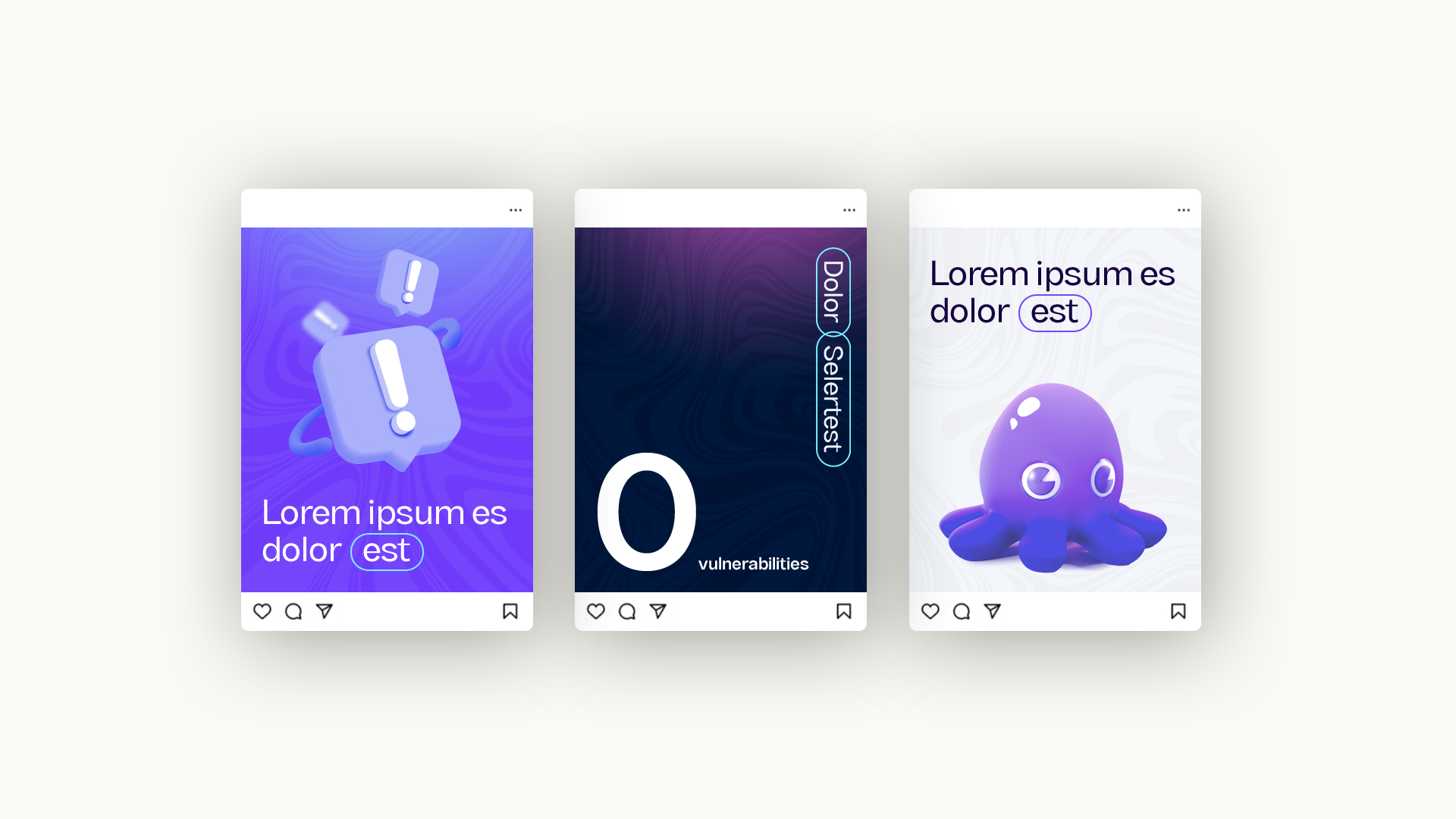
Strategies for a Unified PR & Digital Marketing Approach
1. Data-Driven PR Campaigns
Leveraging analytics and audience insights enables PR teams to craft targeted messages that align with digital marketing goals.
2. Content Marketing with PR Influence
Creating high-quality content that aligns with PR narratives helps brands establish thought leadership and authority.
3. Social Media Amplification
PR efforts gain traction when combined with social media strategies, driving greater engagement and shareability.
4. SEO-Optimized Press Releases
Optimizing press releases for search engines ensures they reach a wider audience and contribute to long-term brand visibility.

Future Trends: Where PR Meets Digital in 2025
AI-powered media monitoring will enhance PR effectiveness, enabling brands to track conversations and measure sentiment more efficiently. Influencer-driven PR will play a greater role in brand credibility, as consumers continue to value authentic endorsements. Additionally, interactive PR campaigns using video, augmented reality (AR), and virtual reality (VR) will provide immersive storytelling experiences that captivate audiences. By staying ahead of these trends, businesses can ensure their PR and digital marketing efforts remain impactful and relevant.
Looking to integrate PR and digital marketing seamlessly? Contact Bluetext today to build a cohesive strategy that drives results.
In today’s digital landscape, social media is a double-edged sword. While it offers brands a powerful platform to connect with their audience, build loyalty, and amplify their messaging, it also leaves them vulnerable to potential crises that can erupt at a moment’s notice. A single misstep or unforeseen event can spark a wave of negative sentiment, threatening to tarnish even the most reputable brands. But with the right strategic approach, brands can not only survive a social media crisis but come out stronger on the other side.
Identifying a Social Media Crisis
Not every negative comment or tweet requires a full-scale crisis response. The first step in successfully navigating a crisis is distinguishing between regular feedback and an actual crisis.
A crisis often involves:
- High volume: A sudden spike in negative comments or mentions across platforms.
- Speed of escalation: The issue spreads rapidly, gaining traction beyond the original audience.
- Virality potential: If left unaddressed, the situation threatens to go viral, reaching a broader, more public audience.
Examples include high-profile product failures, missteps in brand communication, or controversial statements. Brands like Pepsi and United Airlines, for instance, have both faced massive public backlash on social media due to tone-deaf campaigns or mishandled customer service situations. Recognizing when a crisis is looming allows brands to act quickly and mitigate damage.
Preparing for a Crisis
While it’s impossible to predict when or how a crisis will strike, preparation is the key to navigating one effectively. Building a strong crisis management foundation starts with assembling the right team. This team should include representatives from PR, customer service, legal, and social media—each bringing a unique perspective and skill set to handle various facets of the crisis.
Steps for Preparation:
- Create a Crisis Communication Plan: Outline key response protocols, designate spokespersons, and define roles and responsibilities. Ensure your team knows who will be responsible for monitoring social media, crafting responses, and handling media inquiries.
- Use Social Listening Tools: Proactive monitoring through tools like Brandwatch, Hootsuite, or Sprout Social can help you track brand sentiment and spot potential issues before they explode.
- Set Up Response Protocols: Define clear guidelines on when and how to respond. Decide what situations warrant a public statement versus a direct, private outreach. Be prepared to issue holding statements while gathering more information.
Having a structured plan in place will allow your team to act swiftly and effectively when a crisis arises.

Responding to a Social Media Crisis
When a social media crisis hits, timing is everything. The first few hours are crucial in shaping how the public perceives the brand’s response. While it may be tempting to react immediately, it’s important to balance speed with care.
Here’s how to approach your response:
- Acknowledge the Issue: Silence can be perceived as negligence or indifference. Acknowledge the crisis as soon as possible, even if you don’t have all the answers yet. This shows that you are aware of the situation and are working on a resolution.
- Be Empathetic and Accountable: Demonstrate genuine concern for your audience’s feelings. Apologize when necessary and take accountability for any mistakes made. Avoid deflecting blame, as this can further damage your brand’s reputation.
- Tailor Your Message by Platform: Craft your responses in a way that fits each platform’s tone and audience. Twitter requires short, concise updates, while LinkedIn or Facebook may allow for more detailed explanations.
- Coordinate Internal Communication: Ensure that all teams, from customer service to legal, are aligned on messaging. Mixed or conflicting responses can confuse the public and worsen the crisis.
Avoid common mistakes such as arguing with individuals online or issuing insincere apologies. Always remember that public perception is shaped not only by the problem itself but by how your brand handles it.
Turning Crisis into Opportunity
Though social media crises are challenging, they also present an opportunity to demonstrate your brand’s values, transparency, and resilience. How you respond can help rebuild trust with your audience, and, in some cases, even strengthen your relationship with them.
Some strategies to leverage a crisis as an opportunity include:
- Show Transparency: Keep the public informed as you work to resolve the issue. Share updates on what’s being done to fix the problem and be open about what went wrong.
- Demonstrate Accountability: Show that you’re taking steps to address the root cause of the crisis and are making changes based on feedback. For example, after a backlash over offensive messaging, a brand might publicly commit to revisiting its marketing guidelines.
- Rebuild Trust: Once the dust has settled, highlight the improvements made. Show that your brand has learned from the crisis and is taking proactive steps to avoid similar issues in the future.
Brands like Domino’s Pizza have successfully bounced back from crises by owning up to their mistakes and making tangible changes to their business.

Post-Crisis Evaluation
The work doesn’t end once the crisis has passed. A post-crisis evaluation is essential to learn from the experience and prepare for future challenges. Start by analyzing the overall sentiment recovery. Did the brand manage to restore trust? How was the crisis handled internally?
Key areas to evaluate include:
- What went right, and what went wrong?: Assess the effectiveness of your communication strategy, your team’s responsiveness, and the tools you used for monitoring.
- Adjust Your Crisis Communication Plan: Based on your evaluation, make any necessary updates to your crisis communication plan to be better prepared next time.
- Ensure Long-Term Reputation Management: Continue to monitor your brand’s perception post-crisis and focus on maintaining positive engagement with your audience.
Take Control of Your Social Media Strategy
In today’s fast-paced digital world, a social media crisis can strike at any time. But with preparation, strategic communication, and a strong response plan, brands can navigate these challenges with confidence. Don’t leave your brand’s reputation to chance—partner with experts who can help you manage crises and build lasting trust with your audience.
Contact Bluetext today to ensure your brand is ready to handle any crisis with a tailored social media strategy that protects and strengthens your reputation.
As government contractors and marketers navigate an increasingly competitive landscape, events like GAIN 2024 (Government Analytics, Insights, and Networking) are critical for staying ahead of industry trends. Bluetext is excited to be part of this year’s conference on October 17th, hosted by Government Executive Media Group. Whether you’re aiming to expand your knowledge, connect with key decision-makers, or discover cutting-edge strategies for engaging the government market, GAIN 2024 offers an unparalleled opportunity.
In this blog, we’ll take a closer look at what attendees can expect from the event, provide insights into the sessions that will be most beneficial, and offer advice on how to maximize your time at the conference. A particular highlight this year is a panel hosted by Bluetext’s very own Brian Lustig, which will explore the intersection of branding, PR, and contract success in the B2G space.
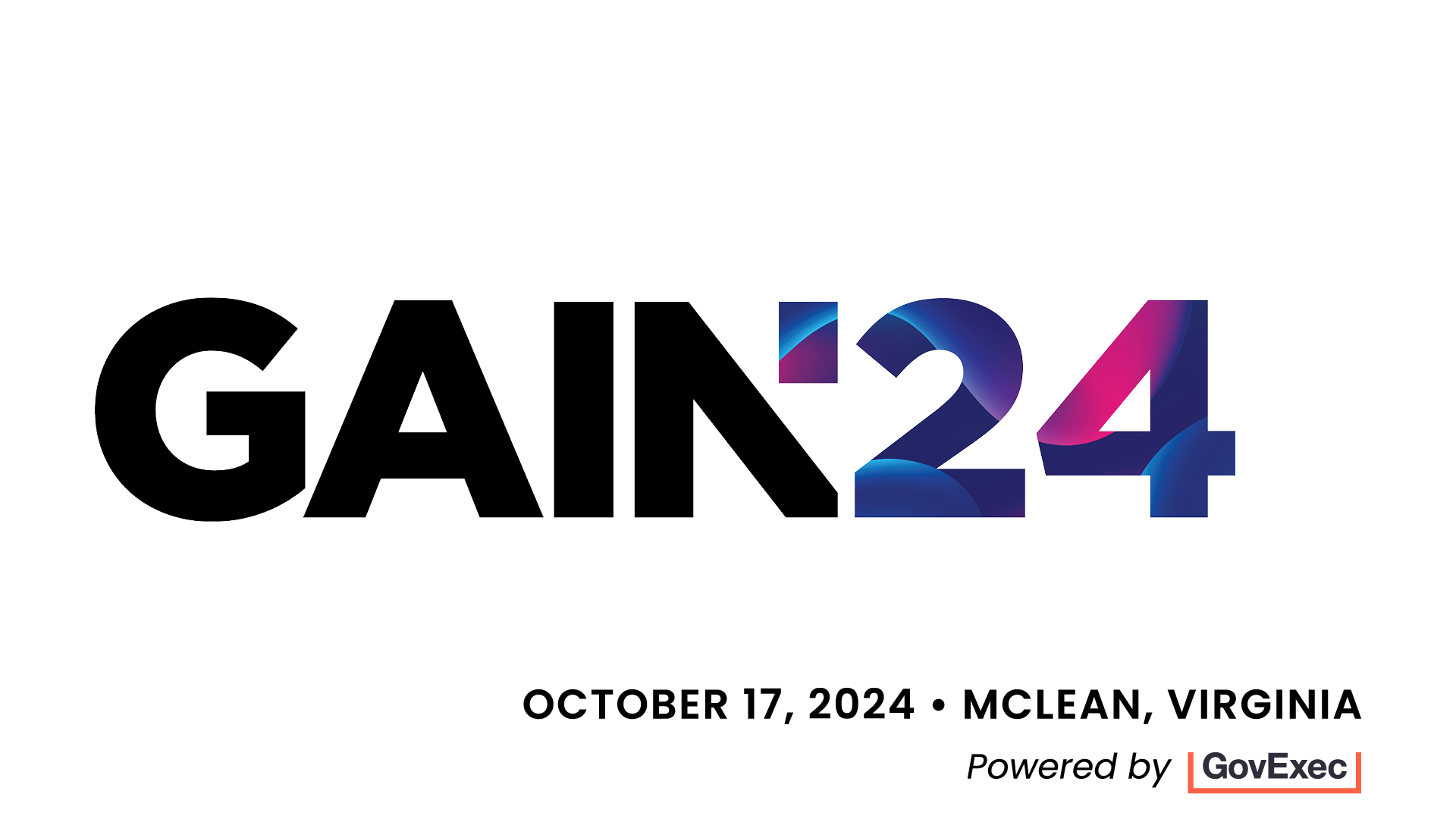
What to Expect at GAIN 2024
GAIN 2024 promises to deliver a dynamic lineup of presentations, workshops, and networking opportunities designed to help professionals in the business-to-government (B2G) sector stay informed on the latest trends and strategies. As a key event for marketing and government contracting professionals, it offers insights into everything from branding and marketing innovations to government procurement and contract pursuits.
Attendees can expect:
- Cutting-edge presentations on the latest marketing, branding, and PR trends specifically tailored to the government contracting space.
- Interactive sessions and workshops that allow attendees to engage directly with experts and peers on key topics like branding, contract marketing, and government relations.
- Networking opportunities with industry professionals, government representatives, and marketing leaders looking to innovate within the government market.
Each year, GAIN attracts hundreds of professionals who are eager to discover how the latest innovations in marketing and analytics can drive better government business results. With a packed agenda and high-profile speakers from leading government contractors and marketing agencies, attendees are bound to leave with actionable strategies they can implement in their own organizations.
Bluetext’s Key Panel: Blueprint for B2G Success
At this year’s conference, Bluetext’s head of public relations, Brian Lustig, will host a pivotal session titled “Blueprint for B2G Success: Branding & PR Strategies for Contract Pursuits.” Taking place at 1:50 pm EST, this session is designed for contractors and marketers looking to align their branding and public relations efforts with government contract cycles, helping to improve visibility and drive long-term growth.
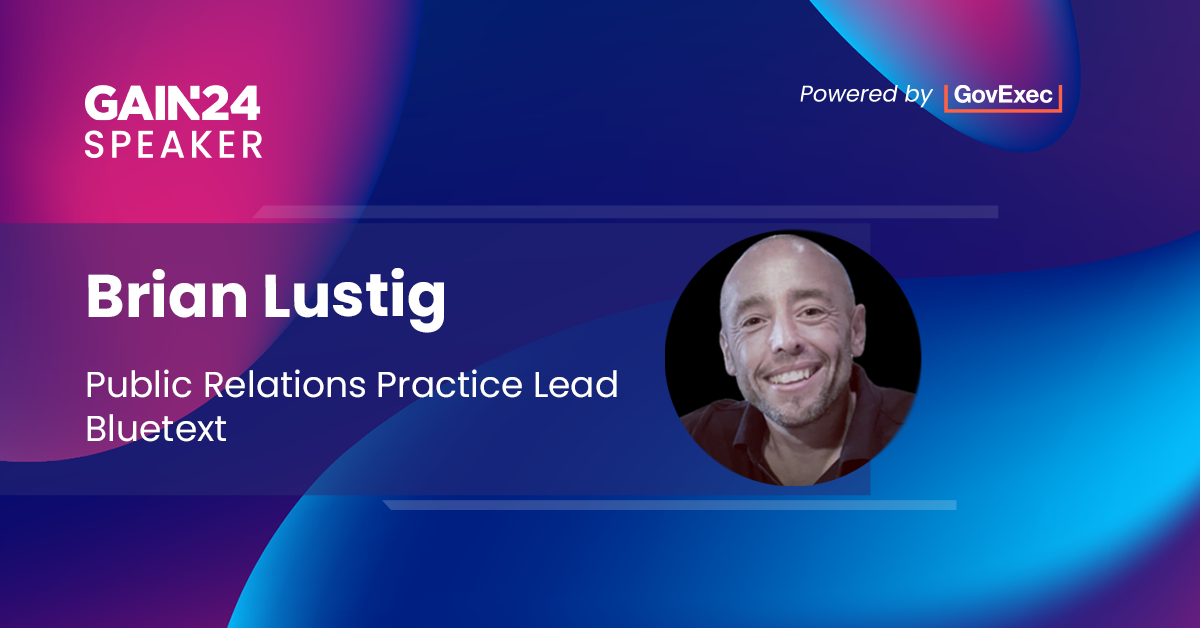
Joining Brian on this panel are industry leaders including:
- Sunny Singh, Former President & CEO, Aeyon
- Scott Aukema, Vice President of Marketing, Sigma Defense
- Robin Vaitonis, Chief Operating Officer, Grafik
These panelists bring a wealth of experience in branding and marketing for the B2G space, and their insights will be invaluable for professionals looking to better position their organizations in the government contracting market.
This session will cover critical aspects of government-focused marketing, including:
- How to develop a unique and memorable brand in the crowded B2G marketplace
- Aligning PR efforts with contract and opportunity timelines to maximize your campaign’s impact and ensure it is strategically aligned with key contract milestones
- Leveraging Ideal Government Personas (IGPs) to better focus marketing efforts, ensuring resources are allocated toward the most promising government buyers
- The power of integrated brand awareness and demand-generation campaigns as force multipliers for growth
Throughout the session, real-world examples from companies like Aeyon, Sigma Defense, and Alion will illustrate how branding and PR can be leveraged to align with contract timelines and drive enterprise value creation. Attendees will leave with actionable takeaways on how to differentiate their brands in a crowded market, how to time PR efforts for maximum visibility, and how to build campaigns that effectively target and engage government buyers.
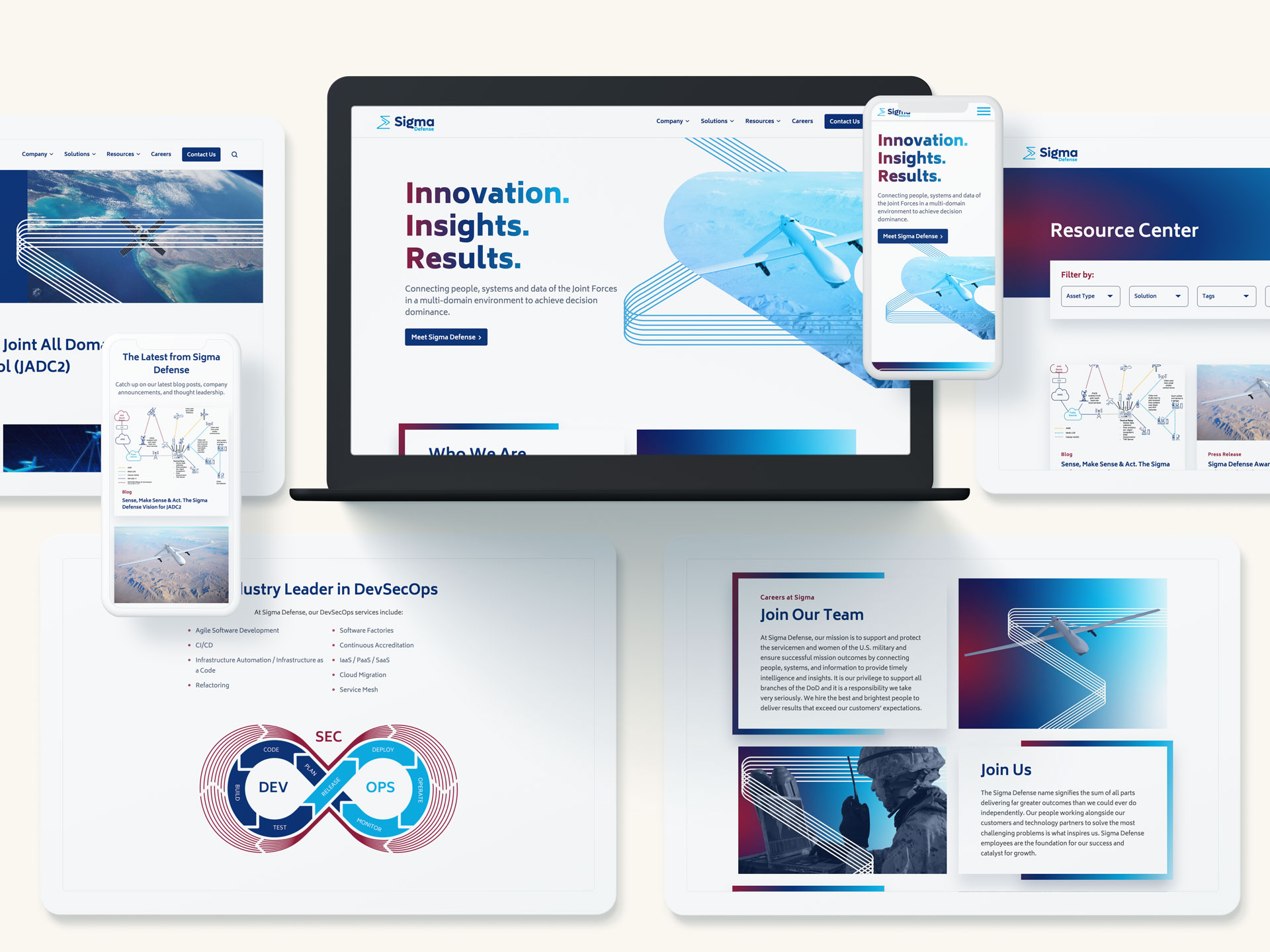
How to Maximize Your Time at GAIN 2024
With a packed schedule and so much valuable content, it’s important to plan ahead to make the most of your GAIN 2024 experience. Here are several tips to help you navigate the conference and ensure you leave with the insights and connections you need:
1. Plan Ahead: Prioritize Your Sessions
Review the agenda ahead of time to identify the sessions that will be most beneficial for your organization. Whether you’re focused on government contract strategies, marketing innovations, or PR alignment, GAIN 2024 has sessions tailored to various interests. Be sure to prioritize Bluetext’s panel on branding and PR strategies, as it will deliver insights specifically geared toward driving B2G contract success.
If you’re unsure where to start, consider the areas where your organization needs the most improvement. Are you struggling to differentiate your brand in a crowded market? Or perhaps you need more clarity on how to align PR efforts with contract timelines? Identify your gaps and select sessions that address those specific needs.
2. Take Full Advantage of Networking Opportunities
GAIN 2024 presents numerous opportunities to connect with industry leaders, peers, and potential clients. With many attendees and speakers from the government contracting world, the connections you make at this event could be the foundation for future partnerships.
Don’t limit your networking to just the formal events. Take the time to strike up conversations during breaks or after sessions. Whether you’re discussing a presentation, sharing insights, or simply chatting over coffee, these informal moments often lead to the most valuable connections.
3. Engage with Speakers and Panelists
GAIN 2024 features a lineup of high-profile speakers, including marketing and government relations experts. This is a unique opportunity to gain insights directly from those who have navigated the complexities of government marketing and contract pursuits.
After sessions like Bluetext’s panel, consider asking questions or following up with speakers. Engaging directly with experts can help clarify key points and provide deeper insights into how you can apply their strategies to your business. Make sure to attend Q&A sessions, which often provide added value beyond the formal presentations.
4. Visit the Exhibitors: Explore Innovations in B2G Marketing
GAIN 2024 will feature an exhibitor space where organizations can showcase the latest tools, technologies, and strategies for improving government marketing efforts. These booths are invaluable for discovering new technologies and solutions that can help streamline your organization’s efforts in the B2G space.
Make time to visit the exhibitors and explore new tools that can enhance your marketing, branding, or PR strategies. Whether it’s a new CRM designed for government contractors or cutting-edge analytics tools, this is a great opportunity to see what’s available and how it can support your organization’s goals.
5. Take Notes and Follow Up After the Event
With so much valuable content coming your way, it’s easy to feel overwhelmed. Be sure to take thorough notes during the sessions, capturing key takeaways that you can revisit and apply to your work. After the conference, set aside time to review these notes and identify the most actionable insights. Prioritize follow-up meetings and connections that can help you implement new strategies or technologies.
Additionally, don’t forget to follow up with contacts you made during the event. A simple email or LinkedIn message can go a long way in solidifying the connections you formed at GAIN 2024.
Conclusion
GAIN 2024 is shaping up to be a landmark event for professionals in the B2G sector, and Bluetext is proud to be part of this dynamic lineup. Whether you’re attending to sharpen your branding strategies, learn how to align PR efforts with government contract timelines, or simply network with industry peers, this conference offers invaluable opportunities to elevate your marketing efforts and drive success in the government space.
We look forward to seeing you at the event and encourage you to join us for Bluetext’s panel, “Blueprint for B2G Success: Branding & PR Strategies for Contract Pursuits”, at 1:50 pm EST on October 17th. Don’t miss the chance to gain actionable insights from industry leaders that can help you navigate the complexities of government contracting and position your brand for growth.
Want to see us at GAIN 2024? Let us know and we’ll be sure to follow up with you.
In today’s competitive government contracting landscape, standing out is no small feat. While pricing and technical capabilities are critical to winning contracts, there’s another crucial factor that can make or break a contractor’s success: thought leadership. Establishing yourself as a trusted authority in your industry is essential, not just for differentiating your business but also for influencing the decision-makers in government agencies.
But what exactly is thought leadership, and how can it help government contractors build credibility and win contracts? Let’s explore.
The Importance of Thought Leadership in Government Contracting
Government contracting is highly competitive, with multiple firms often vying for the same contract. While many contractors may offer similar technical expertise or pricing, one element that can set them apart is their authority within the industry. Thought leadership provides that edge by positioning a company as a trusted advisor to government agencies and procurement officers.
In the public sector, trust and credibility are crucial factors in the decision-making process. Agencies are often risk-averse, preferring to work with companies they believe have a deep understanding of their unique challenges and long-term needs. Contractors that establish themselves as thought leaders demonstrate their commitment to the industry, forward-thinking approach, and ability to provide solutions tailored to government challenges.
This credibility is invaluable in the procurement process, helping to influence perceptions and potentially tipping the scales in your favor when contracts are being awarded.
The Benefits of Thought Leadership
Thought leadership offers several benefits for government contractors:
- Building Trust: By sharing valuable insights, analysis, and solutions, your company becomes a go-to resource for government decision-makers. This positions your firm as more than just a vendor—you’re seen as a strategic partner capable of delivering long-term value.
- Enhancing Visibility: Thought leaders naturally gain more attention, both online and offline. Consistently providing industry insights through articles, white papers, and speaking engagements raises your profile, making your company more recognizable to key stakeholders.
- Creating Opportunities: By engaging with the public sector through thought leadership, you open doors for networking, collaboration, and partnerships. Government contractors who are recognized as industry experts are often sought out for high-level conversations, giving them access to new opportunities.
How to Establish Thought Leadership in Government Contracting
Building a thought leadership strategy requires a concerted effort across various channels. Here are key strategies to consider:
1. Leverage Executive Visibility
Your executives are often the most credible voices within your company. Encourage them to share insights through blogs, white papers, and case studies that address common government contracting challenges. For example, a white paper on improving cybersecurity in public sector IT systems can help position your company as a forward-thinking solution provider in a key area of concern.
2. Engage in Speaking Opportunities
Participating in industry events and conferences is a powerful way to demonstrate expertise. By delivering talks or sitting on panels, your company leaders can showcase their deep industry knowledge, while making valuable connections with procurement officers and other stakeholders in the government space.
3. Media and Content Opportunities
Take advantage of media opportunities to expand your company’s reach. Podcasts, radio tours, and guest articles in respected industry publications can amplify your firm’s voice. Providing expert commentary on emerging trends or challenges, such as the impact of AI on government operations, is a smart way to remain top of mind with key audiences.
4. Create Content That Solves Problems
Government agencies are constantly dealing with complex, evolving issues. Create content that directly addresses these pain points, offering actionable solutions and insights. A case study on how your company helped an agency streamline its procurement process can demonstrate your practical knowledge and ability to deliver results.
Measuring the ROI of Thought Leadership
Like any marketing initiative, thought leadership should be measurable. Key performance indicators (KPIs) might include:
- Engagement metrics: Track the performance of your thought leadership content by monitoring web traffic, social shares, and media mentions.
- Media coverage: A well-placed article or interview can enhance visibility and credibility.
- Business outcomes: Keep an eye on contract inquiries and wins that are linked to your thought leadership activities, as this can indicate direct impact on your bottom line.
By regularly reviewing these metrics, you can adjust your thought leadership strategy to focus on the areas delivering the most value.

Why Thought Leadership Matters for Government Contractors
Thought leadership is more than just a marketing buzzword. For government contractors, it’s a powerful tool for building trust, enhancing visibility, and ultimately winning more contracts. By positioning your company as an authority in your field, you not only differentiate yourself from the competition but also create long-term value for your public sector clients.
Ready to establish your firm as a leader in government contracting? Bluetext can help you develop a customized thought leadership strategy that drives results. Contact us today to get started.
In today’s digital age, the realm of influencer marketing has evolved dramatically. Gone are the days when only celebrities and mega-influencers held the reins of brand influence. Enter the micro-influencer: a more relatable, authentic, and highly effective force in the marketing world. At Bluetext, we’ve witnessed firsthand the power of micro-influencers and how their genuine connections with followers can elevate brands to new heights. In this blog post, we’ll explore the immense potential of micro-influencers and how they can be leveraged across public relations, social media, content marketing, and video campaigns.
What Are Micro-Influencers?
Micro-influencers are individuals with a following typically ranging from 1,000 to 100,000 on social media platforms. Unlike their mega counterparts, micro-influencers tend to focus on niche topics, creating highly engaged communities around their interests. Their followers see them as trustworthy sources of information and recommendations, making their endorsements significantly more impactful.
Authenticity in Public Relations
Public relations is all about building and maintaining a positive image for a brand. Micro-influencers excel in this area because of their perceived authenticity. They often have a close-knit community of followers who trust their opinions. When a micro-influencer endorses a product, it feels like a recommendation from a friend rather than a paid promotion. This trust translates into higher credibility for the brand.
To leverage micro-influencers in your PR strategy, consider inviting them to exclusive events, product launches, or behind-the-scenes tours. Their authentic and enthusiastic coverage can generate genuine buzz and media coverage that resonates more profoundly with the target audience.
The Social Media Advantage
Social media is the playground where micro-influencers shine. Their content is often more relatable and engaging than that of larger influencers, leading to higher engagement rates. Micro-influencers tend to interact more with their followers, fostering a sense of community and loyalty.
For effective social media campaigns, collaborate with micro-influencers who align with your brand values and target audience. Encourage them to create authentic content that showcases your product in real-life scenarios. User-generated content from micro-influencers can be a goldmine for your brand’s social media channels, providing a steady stream of genuine and engaging posts.
Content Marketing with a Personal Touch
Content marketing aims to provide valuable information to the audience, and micro-influencers can significantly enhance this effort. Their deep knowledge of their niche and their personal experiences make their content highly relatable and informative.
Work with micro-influencers to create blog posts, tutorials, reviews, and how-to guides that incorporate your products. This approach not only boosts your content marketing strategy but also positions your brand as an integral part of the influencer’s lifestyle. The personal touch of micro-influencers ensures that the content resonates well with their audience, driving more traffic and conversions for your brand.
Video: The Ultimate Engagement Tool
Video content is king in today’s digital landscape, and micro-influencers are adept at creating engaging and authentic videos. Whether it’s unboxings, product reviews, or daily vlogs, videos by micro-influencers capture the attention of their followers and keep them engaged.
Partner with micro-influencers to create video content that highlights your products in an authentic and entertaining manner. Live streams, IGTV episodes, TikTok videos, and YouTube vlogs can showcase your brand in a way that feels organic and relatable. This not only enhances viewer engagement but also builds a stronger emotional connection with the audience.
Leveraging Micro-Influencers in Paid Media Campaigns
Micro-influencers are not just valuable for organic content; they also play a crucial role in paid media campaigns. Their authentic and relatable content can be seamlessly integrated into paid advertising strategies to enhance reach and effectiveness. When micro-influencers create sponsored posts, stories, or videos, these can be promoted through paid media to extend their reach beyond their immediate followers. This approach leverages the influencer’s credibility and authenticity while benefiting from the targeted reach of paid advertising. Additionally, ads featuring micro-influencers often perform better than traditional ads because they feel more genuine and less intrusive to consumers. By incorporating micro-influencer content into your paid media strategy, you can create ads that resonate more deeply with your audience, drive higher engagement rates, and ultimately, achieve better return on investment.
Embrace the Micro-Influencer Revolution
The power of micro-influencers lies in their authenticity and ability to connect deeply with their audience. By integrating micro-influencers into your public relations, social media, content marketing, and video strategies, you can create more genuine and impactful campaigns. At Bluetext, we believe that the future of influencer marketing belongs to these authentic voices who can bring your brand story to life in the most relatable way.
Embrace the micro-influencer revolution and watch your brand’s influence grow organically and authentically. With the right strategy, micro-influencers can become your brand’s most powerful advocates, driving engagement, trust, and ultimately, success.
In today’s fast-paced digital landscape, businesses are constantly seeking innovative ways to cut through the noise and capture the attention of their target audience. With the myriad of marketing channels available, from social media and paid media to content marketing and public relations, crafting a cohesive strategy that seamlessly integrates these elements has become more crucial than ever. Welcome to the world of digital orchestration, where the art lies in harmonizing these diverse channels to create a symphony of success.
Understanding Digital Orchestration
Digital orchestration is more than just managing individual marketing channels; it’s about orchestrating them in such a way that they work together harmoniously to achieve a common goal. It’s about creating a unified brand experience across all touchpoints, whether it’s a tweet on X, a sponsored post on Facebook, a blog post on your website, or a feature in a leading publication. By synchronizing your efforts across various channels, you can amplify your message and increase overall impact.
The Power of Social Media
Social media has transformed the way businesses connect with their audience. Platforms like Facebook, Instagram, X, and LinkedIn offer unparalleled opportunities to engage with customers in real-time and build meaningful relationships. By incorporating social media into your digital orchestration strategy, you can leverage its reach and influence to amplify your message, drive engagement, and foster community.
Social media is not just about broadcasting your message; it’s about engaging in two-way conversations with your audience. By actively listening to their needs and preferences, you can tailor your content to resonate with them on a deeper level. Whether it’s sharing behind-the-scenes glimpses of your business, responding to customer inquiries, or soliciting feedback, social media allows you to humanize your brand and forge genuine connections with your audience.
Leveraging Paid Media
Paid media, including pay-per-click advertising, display ads, and sponsored content, allows you to reach a targeted audience with precision and scale. By strategically allocating your budget across various channels, you can maximize your ROI and drive measurable results. Whether it’s promoting a new product launch, driving traffic to your website, or generating leads, paid media plays a vital role in amplifying your brand’s visibility and reach.
One of the key advantages of paid media is its ability to provide instant visibility and results. Unlike organic methods that may take time to gain traction, paid media allows you to jumpstart your marketing efforts and quickly generate momentum. By leveraging advanced targeting options and analytics tools, you can optimize your campaigns in real-time to ensure maximum effectiveness and efficiency.
The Importance of Content Marketing
Content is king in the digital age, and content marketing is the fuel that powers your digital engine. Whether it’s blog posts, videos, infographics, or whitepapers, valuable content serves as the cornerstone of your digital strategy. By creating high-quality, relevant content that resonates with your audience, you can establish thought leadership, build trust, and drive engagement. Integrating content marketing into your digital orchestration strategy ensures that your message is not only heard but also valued by your audience.
Content marketing is not just about creating content for the sake of it; it’s about delivering value to your audience at every stage of their journey. Whether they’re seeking information, entertainment, or inspiration, your content should address their needs and provide meaningful solutions. By focusing on quality over quantity and delivering content that educates, entertains, or inspires, you can position your brand as a trusted resource and build long-lasting relationships with your audience.
Amplifying Your Message with Public Relations
Public relations (PR) plays a crucial role in shaping public perception and building brand credibility. By securing media coverage, managing crises, and cultivating relationships with key stakeholders, PR helps enhance your brand’s reputation and visibility. Incorporating PR into your digital orchestration strategy allows you to leverage earned media to amplify your message and reach a wider audience.
In today’s crowded marketplace, earning media coverage can be a powerful way to differentiate your brand and stand out from the competition. By crafting compelling stories, building relationships with journalists and influencers, and staying ahead of industry trends, you can position your brand as a thought leader and gain valuable exposure in relevant media outlets. Whether it’s securing a feature article in a leading publication, appearing on a popular podcast, or participating in industry events, PR can help elevate your brand and generate buzz around your products or services.
The Synergy of Digital Orchestration
The true power of digital orchestration lies in its ability to create synergy across multiple channels. By synchronizing your social media, paid media, content marketing, and public relations efforts, you can amplify the impact of each individual channel and create a unified brand experience for your audience. Whether it’s increasing brand awareness, driving website traffic, or generating leads, digital orchestration allows you to achieve your marketing objectives more effectively and efficiently.
When executed properly, digital orchestration can yield remarkable results for your business. By aligning your messaging, targeting, and creative across all channels, you can create a seamless brand experience that resonates with your audience and drives action. Whether you’re launching a new product, promoting a special offer, or raising awareness for a cause, digital orchestration allows you to deliver the right message to the right audience at the right time, maximizing your impact and driving measurable results.
Digital Channels Working in Harmony
In today’s hyper-connected world, digital orchestration is the key to unlocking the full potential of your marketing efforts. By harmonizing your social media, paid media, content marketing, and public relations strategies, you can create a symphony of success that resonates with your audience and drives tangible results for your business. So, embrace the art of digital orchestration and watch your campaigns soar to new heights of success.
Looking to take your campaigns to the next level? Contact us to get started.
